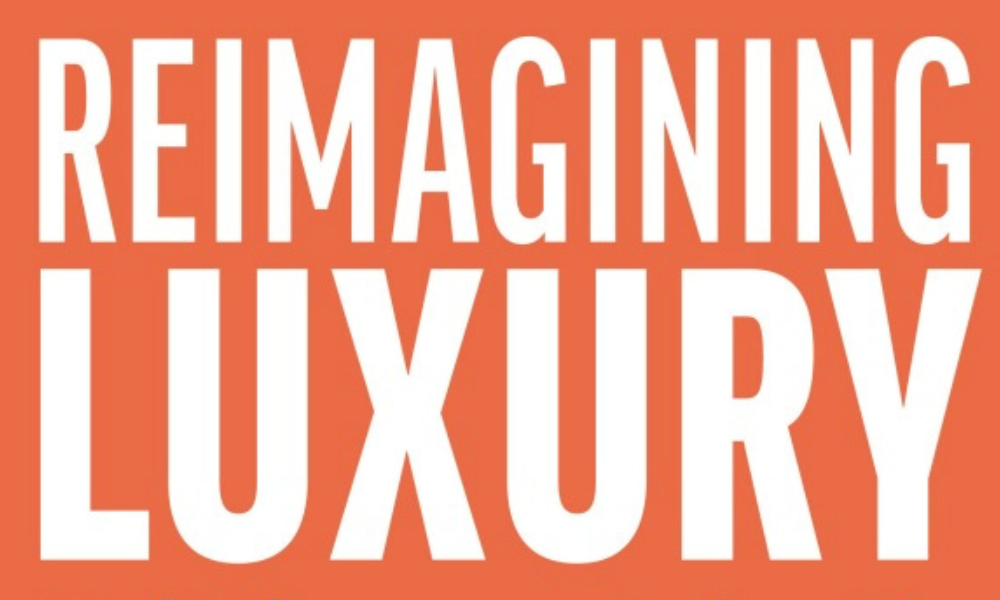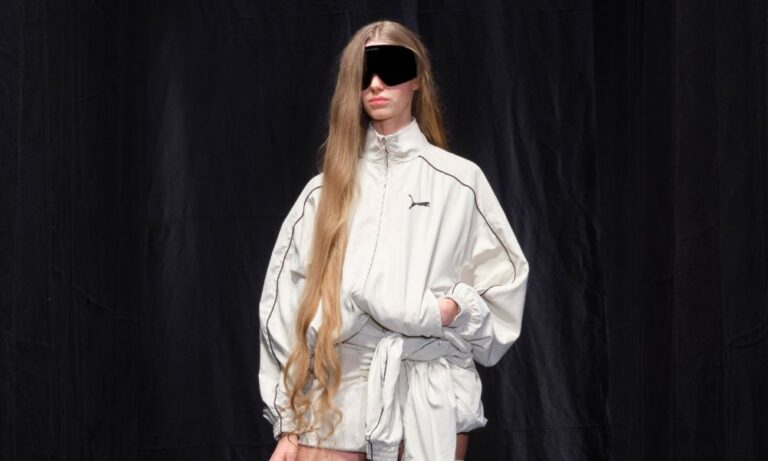Dive into Diana’s book ‘Reimagining Luxury,’ your roadmap to reshaping the future and embracing sustainability in style! Authored by Diana Verde Nieto, this book doesn’t just talk the talk, it walks you through practical frameworks and real-world examples from industry giants like LVMH, L’Oreal, and Kering. Whether you’re a seasoned pro or just starting out, this guide will fuel your journey toward positive change. From eco-conscious practices to compelling storytelling, Verde Nieto’s insights inspire a shift in mindset and action, urging both brands and individuals to champion sustainability. Join the movement to reimagine luxury, lead the charge, and pave the way for a brighter tomorrow as BURO speaks to Diana Verde Nieto.
WHAT ARE SOME KEY MINDSET SHIFTS LUXURY BRANDS NEED TO UNDERGO TO PRIORITIZE SUSTAINABILITY OVER TRADITIONAL PROFIT-DRIVEN APPROACHES?
Transforming your business to prioritize sustainability is a way to boost profits. It’s crucial to understand that sustainability and innovation aren’t acts of goodwill; they are strategies, for driving growth.
Luxury brands recognize the importance of this approach. However, there are some misunderstandings about sustainability and luxury that need clarification. Firstly, it’s essential to see sustainability as an investment than a cost as it brings returns. Secondly luxury brands shouldn’t be underestimated in terms of innovation; they are constantly pushing boundaries. Exploring concepts an leading the way when It comes to innovation.
I wrote in my book Reimagining Luxury “ To shift perspectives towards sustainability it’s vital to have an understanding of your organizations values and connect with minded individuals who share those values. By bringing these people and nurturing relationships both within and outside the company you can foster unity. Creating a shared story and establishing a language will lead to alignment and agreement. Inspirational leaders play a role in driving this change”.
Our mindsets are unique. Influence how we think logically based on our experiences how we interpret external stimuli and our beliefs about the world, around us. Our ‘heartset’ is deeply linked to our awareness and gut feelings. It involves how we engage with our emotions and those of others, with kindness and understanding. Nurturing feelings of love, appreciation and happiness is also a part of ‘heartset’ something that is increasingly valued in leaders and corporate teams.
Culture can be viewed as a shared mindset, within a country or organization. When people unite with a purpose they discover a basis for cooperation. As this shared purpose strengthens the cultures influence grows.
The impact of mindsets and attitudes in shaping your organization is undeniable. However, comprehending how they function and whether we can alter them is an issue. It often appears that those in leadership roles are particularly resistant to changing their beliefs.
Mindsets play a role in shaping our thoughts, feelings, and reactions to circumstances. Nurturing empowering mindsets in individuals and groups can significantly impact how they approach objectives, relationships, and personal development. Ultimately it also determines the quality of results.
At times mindsets are confused with shortcuts because both streamline perspectives into pieces of information. They are essential in guiding us as we adjust comprehend or even change our viewpoints.
For example, you may believe that giving up alcohol would be tough or that training for a marathon would strain friendships due, to the time commitment needed. Consequently, you might opt for another beer of pursuing these aspirations. To shift mindsets effectively it’s essential to believe in the value of training or recognize the importance of committing to a marathon. When your beliefs align with your actions your chances of success increase significantly. For instance, opting to put on your running gear and hitting the pavement of heading to the bar during your scheduled training time.
Likewise, if you’re a smoker but genuinely aspire to kick the habit your chances of success are high. Conversely if external influences such, as peers or health authorities push you to quit without that drive you might find yourself reaching for another cigarette despite knowing its link to cancer.
This concept can be linked back to dissonance stemming from ingrained subconscious beliefs established long ago—possibly in childhood—that now operate automatically in the background.
As individuals we naturally spot discrepancies in other words or deeds. Whether these differences are real or perceived people typically respond by questioning, reflecting, adjusting, analyzing, or critiquing. This inclination arises from our desire for consistency and alignment between our beliefs and actions.
To cultivate a culture of advancement and development, within your organization it’s vital to prioritize leaders who embody a growth mindset. The idea, introduced by Stanford Professor Carol Dweck in her book The New Psychology of Success emphasizes the importance of nurturing a passion, for learning taking chances and valuing work and perseverance (Dweck, 2007).
People who embrace a growth mindset view setbacks as opportunities for growth. Tackle challenges with optimism. They believe in their potential. Are always eager to expand their knowledge and skills. Conversely individuals with a fixed mindset cling to the notion that change, and progress are unattainable. They avoid risks out of fear of failure. Feel intimidated by others success. Moreover, they tend to conceal their shortcomings of seizing chances to improve.
Fostering a growth mindset would greatly benefit the culture within your organization. A growth mindset is crucial for any thinking company, one that strives to remain innovative by promoting experimentation, entrepreneurship, and creativity. It is essential to realize that making errors along the way is acceptable long as they are approached with honesty and serve as opportunities for learning and growth.
If your organization faces challenges in embracing change or fostering innovation it might be due to having leaders with fixed mindsets than those, with growth mindsets. In situations leaders may not be keen, on shaking things up or coming up with ideas.
It’s important to understand that people can change their perspectives by facing their distortions. The internal biases and filters that contribute to anxiety. By questioning these distortions and adopting a mindset focused on growth individuals can unleash their potential.
It’s evident that giving preference to leaders with a growth-oriented mindset will greatly impact your organization’s ability to succeed in an evolving environment. Embracing this viewpoint will not just empower individuals. Equip your organization to tackle obstacles and foster innovation confidently.
IN TRANSITIONING TOWARDS SUSTAINABILITY, WHAT ARE THE MOST EFFECTIVE STRATEGIES LUXURY BRANDS CAN ADOPT TO INTEGRATE ENVIRONMENTALLY-FRIENDLY PRACTICES INTO THEIR SUPPLY CHAINS AND PRODUCTION PROCESSES?
There is one – and that is innovate. Aacknowledging, that you know there’s a problem with your products, or process of overall business model is a great first step to understand where are the areas where your business could consider small ‘innovation hacks’ as the Innovation (with capital letters) we all know takes time, not just to find the solution but more often than not to concretely define the problem and find the right partners to help it solve it.
In my book Reimagining Luxury, I have interviewed Chantal Gaemperle, Group Executive Vice President Human Resources and Synergies at LVMH – she shared with me that
“The first step to drive breakthrough innovation into your business is to create a fertile ground for people to try new things and fail quickly, “In 2017. DARE, (Disrupt, Act, Risk to be an entrepreneur) was born to give LVMH employees a voice and a platform for their ideas to be heard following an agile – start up – methodology. In such a sizeable group like LVMH – 75 Maisons (brands), 200’000 employees – cultivating an entrepreneurial spirit, giving employees a chance to contribute allows to stay agile and close to our founding values. DARE is about that, and it showed great benefits for business and people development. It mobilises senior executives as coach and mentors of the projects selected, thus giving COMEX members a pulse of the organisation, staying close to people. I have been a sponsor from the beginning, proud that the program was born and developed in HR,” Gaemperle said.
I was invited as an entrepreneur mentor from the beginning of the programme and gave my support to the programme for 3 years. The methodology used was similar to the Standard D school about fast prototyping and testing and preparing their pitch to get funded. For the last 5 years the DARE community had over 720 people attending the events and more than 30,000 active people on the platform and LVMH funded 52 projects to date.
As an example, these are 4 projects that the group founded, and they are successfully running.
● Nona Source, was the first online resale platform which re-values deadstock fabrics from the Group’s Fashion & Leather Goods
● Maisons Shero, an internal digital platform created to empower LVMH women and men through learning modules and inspiring content with the goal of boosting Gender Equity, such as articles, videos, and podcasts.
● The Inclusion Index, an observatory and accelerator of Diversity and Inclusion initiatives within LVMH
Heristoria, curates and sells iconic millesime pieces from LVMH Maisons
Why did DARE work so well? Firstly, culture is the one thing that brings together all the Maisons within the LVMH family – whether fashions and leather goods, wines & spirits, hospitality etc. Secondly, the initiative illustrates the power of teams, gathering diverse profiles and experiences, participants working not only on their ideas but contributing to those of others and ultimately the performance of the group. Dare is now a worldwide diverse and motivated community that we nurture and will keep growing creativity and innovation have always been rooted in our group’s DNA.
HOW CAN LUXURY BRANDS EFFECTIVELY COMMUNICATE THEIR SUSTAINABILITY EFFORTS TO CONSUMERS WITHOUT COMPROMISING THEIR BRAND IMAGE OR PERCEIVED EXCLUSIVITY?
All brands can communicate their sustainability by being sustainable – I always say if you truly want to know how sustainable a brand is – look at their innovation budget. The companies that invest in optimising for sustainability are hacking their system and transforming their business instead of just communicating.
WHAT ROLE DO INNOVATION AND TECHNOLOGY PLAY IN ENABLING LUXURY BRANDS TO EMBRACE SUSTAINABILITY WITHOUT SACRIFICING QUALITY OR LUXURY APPEAL?
In today’s luxury industry, the integration of sustainability is made possible through innovation and technology, presenting a persuasive case for brands to adopt these practices. The role of innovation and technology goes beyond just meeting sustainability goals; it enables luxury brands to maintain their high standards of quality and appeal.
One way in which this is achieved is through the development and utilization of sustainable materials that cater to the demands of luxury consumers. Advancements in bio-based fabrics exemplify this, as they offer both sustainability and a luxurious aesthetic.
Moreover, technology plays a crucial role in optimizing production processes for luxury brands, resulting in reduced waste, energy consumption, and carbon emissions. With the help of automation, robotics, and data analytics, manufacturing becomes more streamlined, ensuring precise and efficient production while minimizing environmental impact.
The implementation of circular economy initiatives within luxury brands is also facilitated by innovation and technology. This includes the development of systems for product repair, refurbishment, and recycling – practices that extend the lifespan of products and reduce waste. Additionally, technologies such as 3D printing enable on-demand production, effectively minimizing overproduction and excess inventory. These efforts further contribute to sustainability goals.
By embracing innovation and technology, luxury brands are empowered to seamlessly integrate sustainability into their operations without compromising on quality or appeal. These advancements not only support environmental conservation but also align with consumer expectations for responsible luxury consumption.
COULD YOU PROVIDE EXAMPLES OF LUXURY BRANDS THAT HAVE SUCCESSFULLY TRANSITIONED TO A SUSTAINABILITY-FOCUSED MODEL, AND WHAT LESSONS CAN OTHERS LEARN FROM THEIR EXPERIENCES?
Stella McCartney has gained a reputation for its unwavering commitment to sustainability and ethical practices. The brand has been at the forefront of incorporating sustainable materials into their designs, such as vegetarian leather and recycled fabrics. One of the reasons behind Stella McCartney’s success is their ability to demonstrate that luxury and sustainability can coexist harmoniously. By placing a high priority on sustainable materials and maintaining transparent supply chains, Stella McCartney has become a shining example for other brands looking to integrate sustainability into their core values.
The Kering Group, the parent company of renowned luxury brands like Gucci, Saint Laurent, and Balenciaga, has taken significant strides in implementing a comprehensive sustainability strategy. What sets Kering Group apart is their holistic approach to sustainability, which encompasses all aspects of their brand portfolio. Their dedication to collaboration and forming partnerships has played a crucial role in driving sustainability initiatives throughout the industry.
These luxury brands offer valuable lessons when it comes to embracing sustainability. They emphasize the importance of establishing clear sustainability goals, fostering innovation and creativity, adopting a holistic perspective towards sustainability efforts, collaborating with various stakeholders, and engaging consumers through tangible actions rather than mere rhetoric about sustainability.
WHAT CHALLENGES OR OBSTACLES DO LUXURY BRANDS TYPICALLY FACE WHEN ATTEMPTING TO IMPLEMENT SUSTAINABILITY INITIATIVES, AND HOW CAN THEY OVERCOME THESE HURDLES EFFECTIVELY?
One of the main challenges that companies face in implementing sustainability across various aspects such as products, processes, packaging, manufacturing, and materials is the need for capital expenditure. A highly beneficial approach to overcome this challenge is through collaborations with other companies, even those who are competitors. By sharing the investment costs, not only does this benefit the industry, but also contribute positively to bettering societies and nature. It is crucial to shift our focus towards achieving positive outcomes rather than merely measuring impact.

ALSO READ: MEET NORA AL MATROOSHI – THE FIRST ARAB WOMAN TO GRADUATE FROM NASA.




